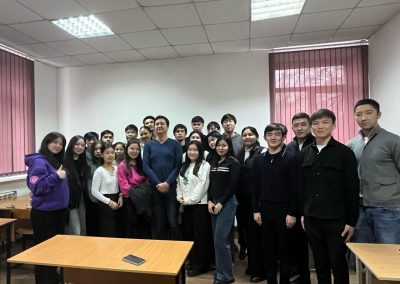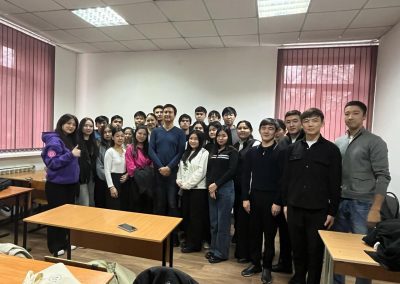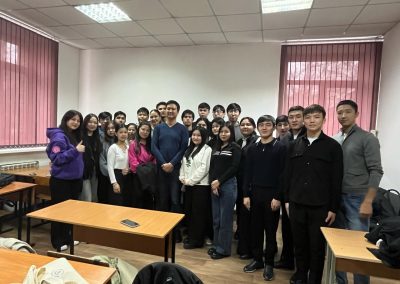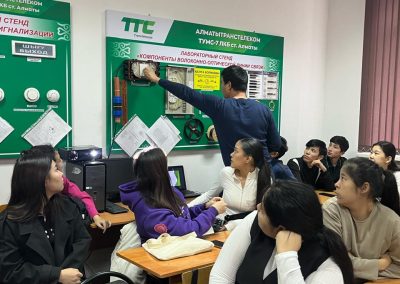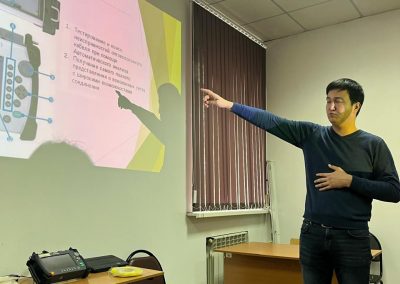On November 13, 2024, a guest lecture was held at the Transtelecom Communications House for students of the Radio Engineering, Electronics and Telecommunications educational program. The lecture was given by Azamat Mukhtaruly, Head of the Secondary Networks Department of the Almatyranstelecom branch, on the topic “Communication measurements in technology”. In the water part, Azamat Mukhtaruly tells students about the importance of measuring and quality of communication, since any communication system is based on the process of transmitting and receiving signals, as well as their qualitative representation and processing. Measurements allow precise control of the signal quality at each stage of transmission — from the source to the receiver. Understanding the signal strength, distortion, and noise is critical to developing reliable and efficient systems. In the event of a malfunction in the system, measurements help to locate the problem, whether it is signal loss, transmission errors, or equipment problems. He further outlined the types of measurements that play an important role in ensuring the reliability and efficiency of communication systems:
- Measuring the amplitude and level of the signal. One of the most basic measurements is measuring the amplitude of the transmitted signal. This allows you to control its strength and, consequently, the level of interference and noise, which is especially important when transmitting over long distances.
- Measurements of the frequency and spectrum of the signal. It is important to control the frequency range of the transmitted signal to avoid interference with other channels. Measuring the spectrum also allows you to identify unwanted harmonics and noise.
- Time and delay measurements. Signal transmission time and delay play an important role, especially in systems with high data transfer rate requirements (for example, in real time). These measurements are important for synchronizing the various elements of the communication system.
- Measurements of transmission distortions and errors. Due to the influence of interference and noise, it is important to control the distortion factor and the number of errors during data transmission. This includes parameters such as bit error (BER), error rate, and other characteristics.
Modern instruments and technologies for measurements:
Spectrum analyzers. These are devices that allow you to measure the amplitude of a signal by frequency. They are used to analyze the spectrum of radio emissions and various signals in radio frequency systems.
Oscilloscopes. These devices are used to display the time characteristics of signals, which is important for monitoring the waveform, its amplitude and time distortion.
Power and signal level meters. These devices are necessary to accurately measure the power of the transmitted signals and their levels at various points in the system.
BER (bit error rate) meters. They are used to evaluate data transmission errors and control the quality of communication.
Systems for measuring delays. For high-speed and complex networks, it is important to control system response time and delays at different stages of information transmission. In the final part of the lecture, I noted that measurements in communication technology are the basis on which the efficiency, reliability and development of any communication systems are built.





